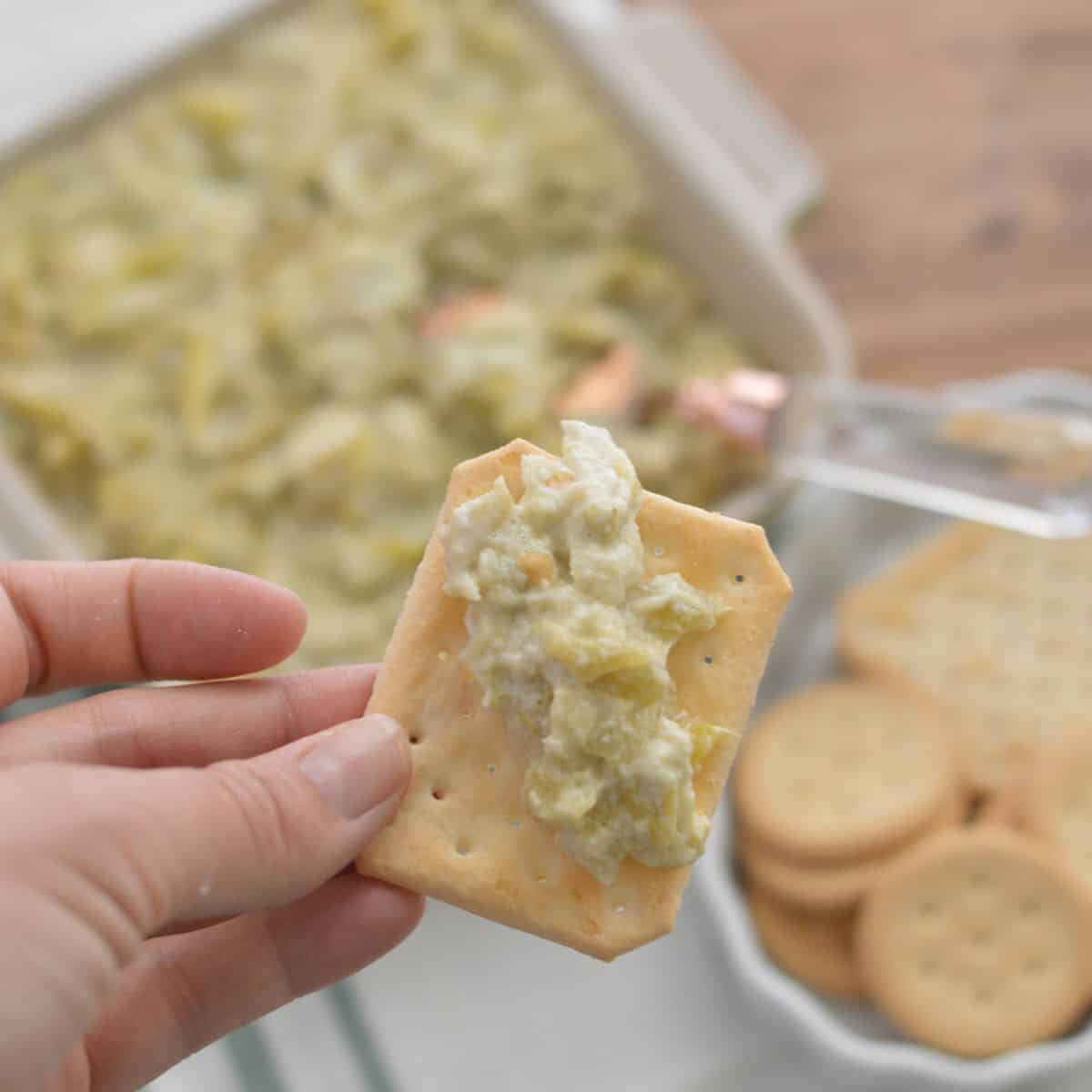Imagine the satisfying crunch of a perfectly baked cracker, free from the constraints of gluten, nuts, and dairy. This isn’t a dream; it’s a delicious reality achievable through careful ingredient selection and precise baking techniques. This guide unveils the secrets to crafting crispy, flavorful crackers suitable for diverse dietary needs, exploring a spectrum of gluten-free flours, nut-free flavor enhancers, and dairy-free binding agents. Prepare to embark on a culinary journey where texture, taste, and dietary restrictions harmonize seamlessly.
We’ll delve into three unique cracker recipes, each showcasing a distinct flavor profile and textural experience. From the subtle nuances of rice flour to the satisfying heartiness of tapioca, we’ll explore the versatility of gluten-free ingredients. Learn to master the art of achieving that perfect crisp, avoiding the pitfalls of sogginess, and extending the shelf life of your creations. Discover how to elevate your crackers with exciting flavor combinations, ranging from savory spice blends to subtly sweet additions, transforming these simple treats into culinary masterpieces.
Ingredient Exploration
Crafting gluten-free, nut-free, and dairy-free crispy crackers requires careful consideration of ingredient alternatives. The right flour blend will determine the cracker’s texture, while alternative flavor and texture enhancers will replace the richness typically provided by nuts and dairy. This section explores suitable options and potential challenges.
Gluten-Free Flour Alternatives
Selecting the appropriate gluten-free flour blend is crucial for achieving the desired crispness and texture in your crackers. Different flours possess unique properties that impact the final product. A blend often works best, combining the strengths of various flours.
- Rice Flour: A neutral-flavored flour that contributes to a light and slightly crumbly texture. It’s often used as a base in gluten-free baking but can result in crackers that are somewhat delicate if used alone. Adding other flours improves its structural integrity.
- Tapioca Flour (Tapioca Starch): This flour adds a chewy texture and helps bind other ingredients. It’s often used in small amounts to improve the crispness and prevent brittleness in gluten-free crackers. However, too much tapioca flour can lead to a gummy texture.
- Sorghum Flour: This flour offers a slightly sweet and nutty flavor, contributing a good level of structure to the crackers. It’s a great option for adding a bit of natural sweetness and body to the mix. It can sometimes result in a slightly dense cracker if overused.
- Potato Flour: Adds lightness and fluffiness to baked goods, though it may require additional binding agents to ensure the crackers hold their shape well. It contributes a slightly starchy taste.
- Buckwheat Flour: While technically not a grain, buckwheat flour is gluten-free and adds a slightly earthy, nutty flavor and good binding properties. It contributes a distinctive flavor that might not appeal to all palates.
Alternatives to Nuts and Dairy for Flavor and Texture
Nuts and dairy products often provide both flavor and richness to crackers. Finding suitable substitutes requires considering their roles. For instance, nuts contribute both flavor and a pleasant mouthfeel; dairy provides richness and often acts as a binding agent.
- Seeds (Sunflower, Sesame, Flax, Pumpkin): Seeds offer a variety of flavors and textures, from the subtle nuttiness of sunflower seeds to the earthiness of flax. They add healthy fats and can contribute to a satisfying crunch.
- Nutritional Yeast: This deactivated yeast provides a cheesy, nutty flavor that can enhance the savory profile of the crackers, particularly when paired with herbs and spices. It adds a umami note and a slightly crumbly texture.
- Coconut Oil (or other healthy oils): Coconut oil adds moisture and a subtle coconut flavor (which can be minimized by using refined coconut oil). It helps to create a flaky and tender texture, contributing to the overall mouthfeel of the crackers. Other oils like olive oil or avocado oil can also be used.
- Herbs and Spices: A wide array of herbs and spices can add complexity and depth of flavor to the crackers, masking any potential blandness from the gluten-free flour blend. Experiment with different combinations to find your favorites.
Challenges of Using Gluten-Free Flours and Solutions
Gluten-free flours behave differently than wheat flour. Understanding these differences is essential for successful cracker making.
- Moisture Absorption: Gluten-free flours absorb moisture differently. Some may require more or less liquid than traditional recipes. Solution: Start with the minimum amount of liquid specified in the recipe and add more gradually until the dough reaches the desired consistency. Observe the dough’s texture closely.
- Lack of Gluten’s Binding Properties: Gluten provides elasticity and structure; its absence requires using binding agents. Solution: Incorporate binding agents like xanthan gum, guar gum, or psyllium husk powder to improve the dough’s cohesiveness and prevent crumbly crackers.
- Variability in Flour Quality: The quality of gluten-free flours can vary significantly between brands. Solution: Read reviews and experiment with different brands to find one that consistently produces the desired results. Note the brand and type of flour that you find to work best in your recipes.
- Achieving Crispness: Achieving the desired level of crispness can be challenging. Solution: Ensure the crackers are baked at the correct temperature for the appropriate amount of time. Using a baking sheet lined with parchment paper and allowing the crackers to cool completely before storing will also contribute to optimal crispness.
Step-by-Step Baking Process
Creating perfectly crispy, gluten-free, nut-free, and dairy-free crackers requires careful attention to detail throughout the baking process. The following steps Artikel a method for achieving optimal texture and flavor, avoiding dryness or sogginess. Precise measurements and even baking are key to success.
- Preparing the Dry Ingredients: Begin by precisely measuring all dry ingredients: gluten-free flour blend (ensure it’s a blend designed for baking, not just for thickening), xanthan gum (for binding), salt, and any desired spices. Whisk these thoroughly in a large bowl to ensure even distribution and prevent clumping. This step prevents pockets of concentrated flavor or texture in the final product. A light, airy texture in the dry ingredients translates to a similarly light cracker.
- Incorporating the Wet Ingredients: In a separate bowl, combine the wet ingredients: olive oil (or other preferred neutral-flavored oil), water, and any liquid flavorings (e.g., apple cider vinegar for a subtle tang). Whisk these together until completely emulsified. The emulsification of oil and water is crucial for a cohesive dough. A properly emulsified mixture results in a smoother, more evenly distributed dough.
- Combining Wet and Dry Ingredients: Gradually add the wet ingredients to the dry ingredients, mixing gently with a spatula or wooden spoon until just combined. Overmixing develops gluten (even in gluten-free flour), leading to tough crackers. The goal is a slightly moist, slightly sticky dough that holds its shape but isn’t overly wet.
- Rolling the Dough: Lightly flour a clean work surface with gluten-free flour. Place the dough on the surface and gently roll it out to an even thickness of about ⅛ inch (3mm). An even thickness ensures uniform baking and crispness. Using a rolling pin with even pressure prevents unevenly thin or thick areas, leading to inconsistent cracker textures.
- Cutting the Crackers: Use a sharp knife or pizza cutter to cut the dough into desired shapes and sizes. A sharp blade ensures clean cuts, preventing ragged edges that might burn unevenly during baking. Consistent shapes and sizes result in uniform baking and visual appeal.
- Prick the Crackers: Using a fork, prick the crackers several times to allow steam to escape during baking. This prevents puffing and ensures even crispness. Without pricking, steam can build up and create bubbles or uneven baking.
- Baking the Crackers: Preheat the oven to 350°F (175°C). Place the crackers on a baking sheet lined with parchment paper. Bake for 12-15 minutes, or until the edges are golden brown and the crackers are crisp. Keep a close eye on them, as oven temperatures can vary. Baking time might need to be adjusted depending on the thickness of the crackers and your oven.
- Cooling and Storing: Remove the crackers from the oven and let them cool completely on a wire rack before storing. Cooling completely prevents the crackers from becoming soggy. Store the cooled crackers in an airtight container at room temperature for optimal crispness.
Achieving Optimal Crispiness
Maintaining optimal crispness hinges on several factors: even dough thickness, thorough baking, and proper cooling and storage. Uneven dough thickness leads to uneven baking, with thinner areas crisping faster and potentially burning before thicker areas are fully baked. Underbaking will result in soft, chewy crackers, while overbaking can lead to dryness and brittleness. Improper cooling can trap moisture, resulting in soggy crackers. Proper storage in an airtight container helps prevent moisture absorption from the air.
Flavor Combinations and Enhancements

Crafting delicious gluten-free, nut-free, and dairy-free crackers involves exploring a world of exciting flavor profiles. The absence of common allergens opens up opportunities to experiment with unique spice blends, herbs, and seeds, creating both savory and sweet delights. Careful consideration of baking temperatures and times further refines the texture and overall taste experience.
The versatility of these crackers allows for a wide range of flavor combinations, appealing to diverse palates. Savory options can incorporate bold, earthy notes, while sweet variations offer delicate sweetness balanced with subtle spices. The following sections delve into specific examples and techniques for achieving optimal flavor and texture.
Savory and Sweet Flavor Combinations
Savory cracker options can range from subtly herbaceous to intensely spicy. Imagine a cracker delicately seasoned with rosemary and sea salt, its crisp exterior hinting at the aromatic herbs within. Alternatively, a bolder flavor profile might include a blend of smoked paprika, cumin, and black pepper, delivering a complex, warm spice that lingers on the palate. For sweet crackers, consider the subtle sweetness of cinnamon and cardamom, creating a comforting warmth, or the zesty brightness of orange zest and ginger, offering a more vibrant, invigorating flavor. These examples demonstrate the breadth of possibilities when crafting flavorful, allergen-free crackers.
Spice Blends, Herbs, and Seeds for Enhanced Flavor
Adding carefully chosen ingredients can elevate the simple cracker into a culinary masterpiece. The following table illustrates a variety of options for creating unique flavor profiles. Note that the quantities are suggestions and can be adjusted to personal preference.
| Spice Blend | Herbs | Seeds | Flavor Profile |
|---|---|---|---|
| Italian seasoning (oregano, basil, thyme, rosemary) | Parsley | Sesame | Herbaceous and slightly savory |
| Smoked paprika, cumin, chili powder | Cilantro | Poppy | Spicy and smoky |
| Garlic powder, onion powder, black pepper | Dill | Sunflower | Savory and pungent |
| Cinnamon, cardamom, ginger | Lavender (use sparingly) | Flax | Sweet and warm |
Baking Temperature and Time’s Influence on Texture and Flavor
Baking temperature and time significantly impact the final cracker’s texture and flavor. A higher temperature (e.g., 400°F or 200°C) will result in a crispier cracker, potentially at the cost of some flavor development if the baking time is too short. Lower temperatures (e.g., 350°F or 175°C) with a longer baking time will yield a cracker with a slightly softer texture and a more fully developed flavor. For instance, baking at a lower temperature for a longer duration might allow the subtle sweetness of cinnamon to fully bloom in a sweet cracker, while a higher temperature would create a crisper texture, perhaps better suited for a savory cracker with a robust spice blend. Experimentation is key to finding the optimal balance for your chosen flavor profile.
Creating delicious and allergy-friendly crackers is within everyone’s reach. This guide has equipped you with the knowledge and recipes to craft crispy, flavorful crackers that cater to diverse dietary needs. By understanding the properties of different gluten-free flours and the art of balancing flavors and textures, you can confidently experiment with various ingredients and create your own signature cracker blends. Remember, the journey to the perfect cracker is an exploration of taste and texture, a delightful adventure waiting to be savored. So, gather your ingredients, embrace the process, and delight in the satisfying crunch of your homemade creations.
Key Questions Answered
Can I store these crackers in the freezer?
Yes, freezing crackers in an airtight container helps maintain their crispness for an extended period.
What if my crackers are too soft after baking?
This often indicates insufficient baking time or moisture in the dough. Try reducing the dough moisture slightly and increasing baking time.
Are there any other suitable gluten-free flours besides the ones mentioned?
Yes, options like sorghum flour, buckwheat flour, and blends can be experimented with, though results may vary.
How can I make my crackers more flavorful?
Experiment with different herbs, spices, seeds, and even finely grated vegetables or cheese alternatives to add depth and complexity.


